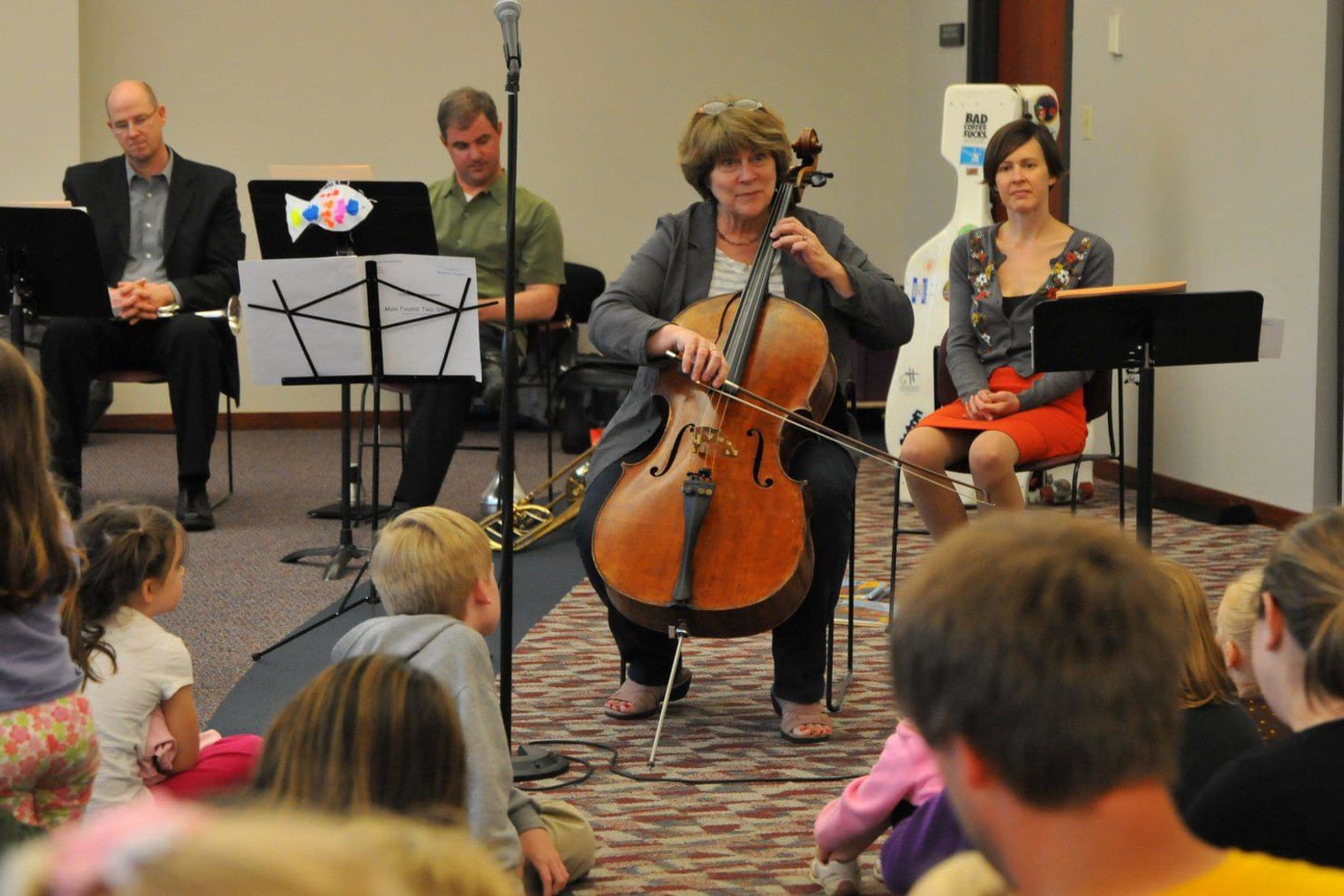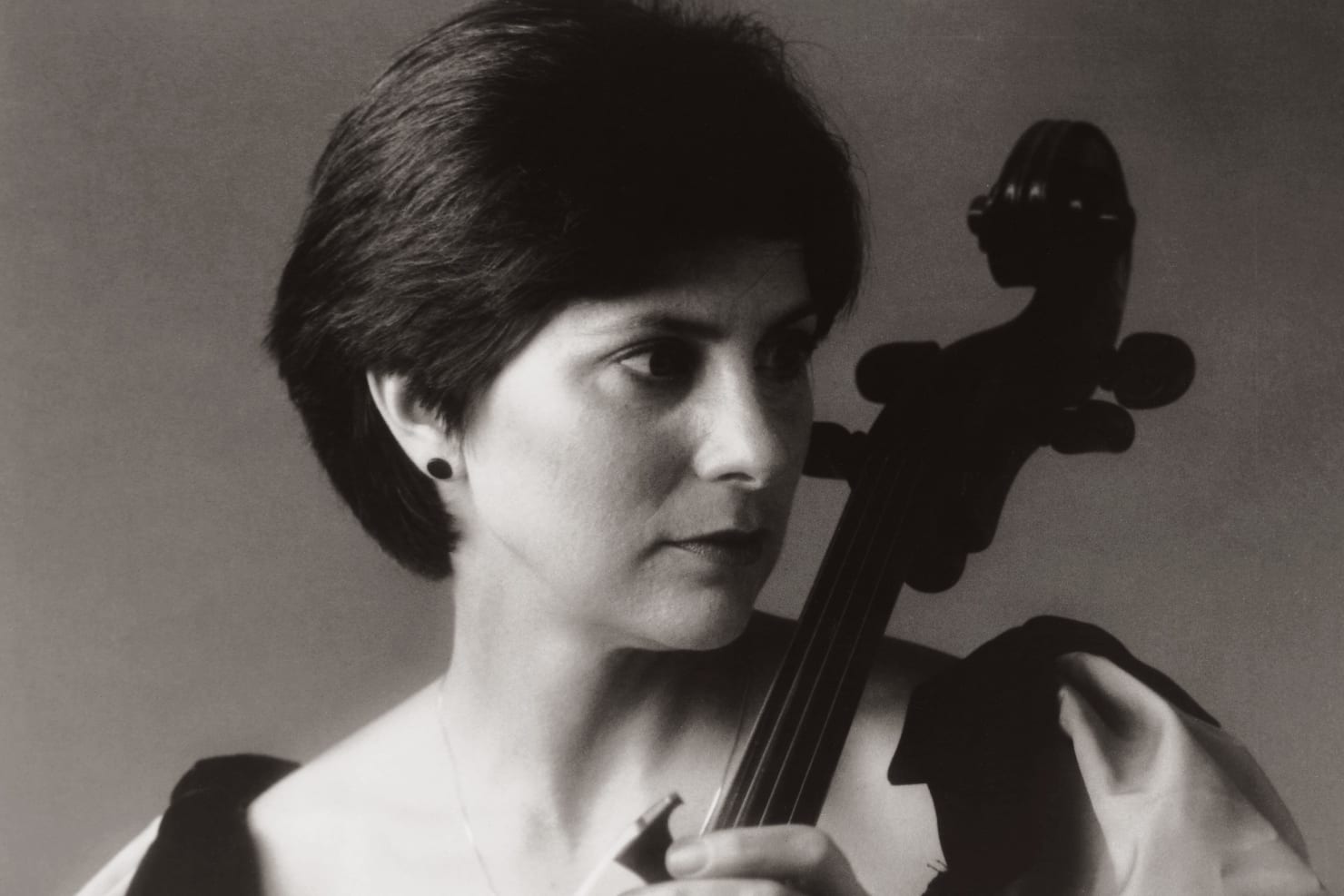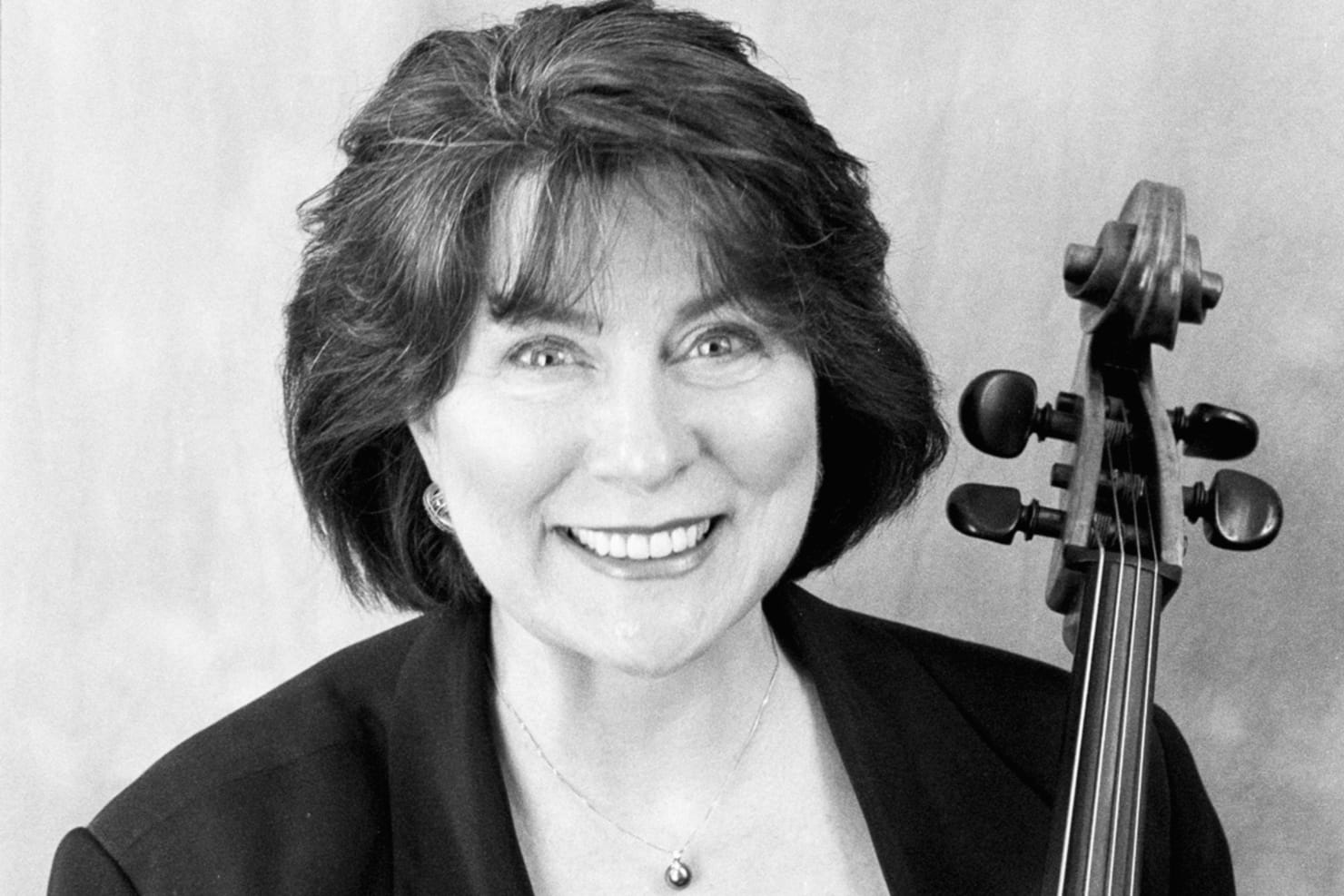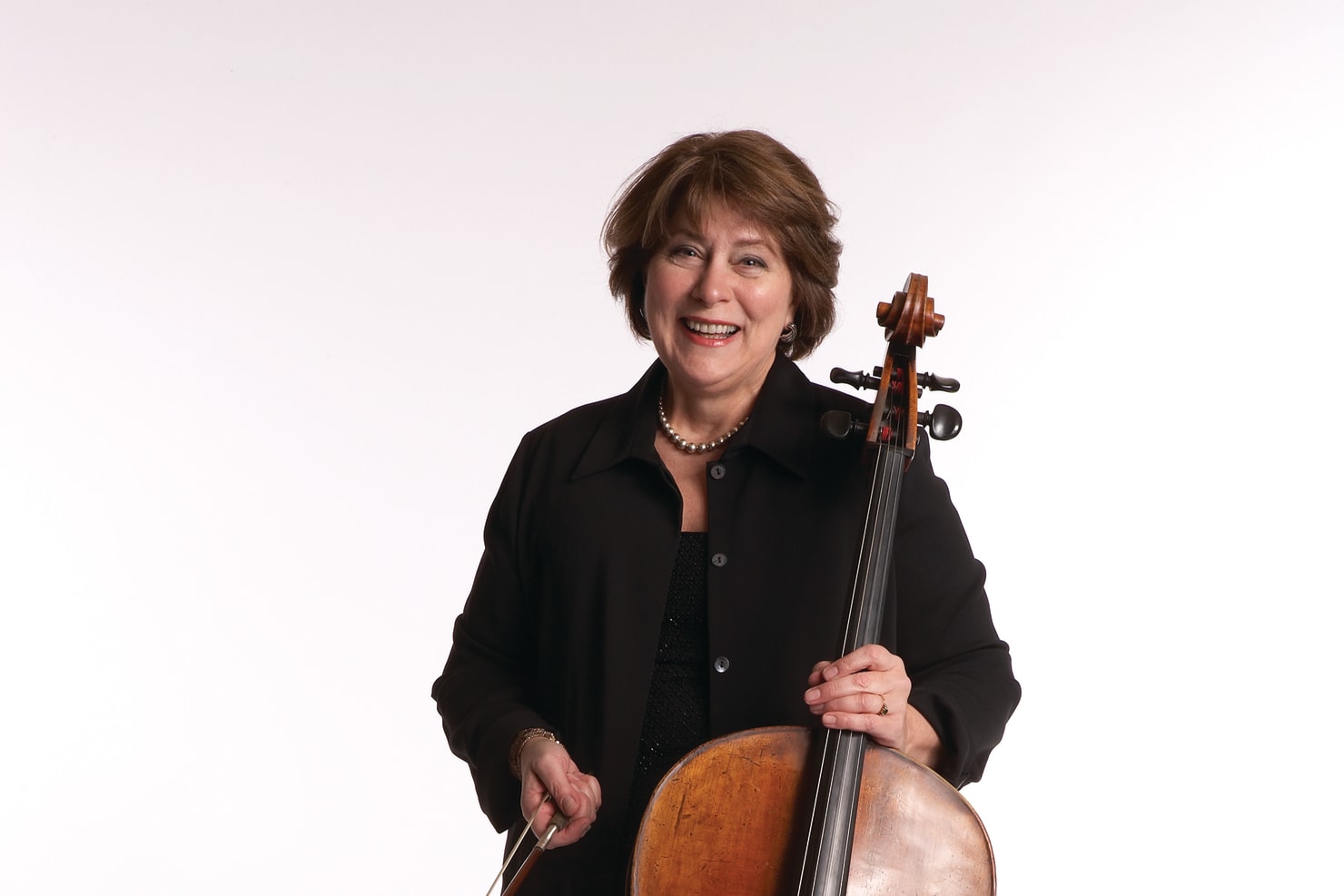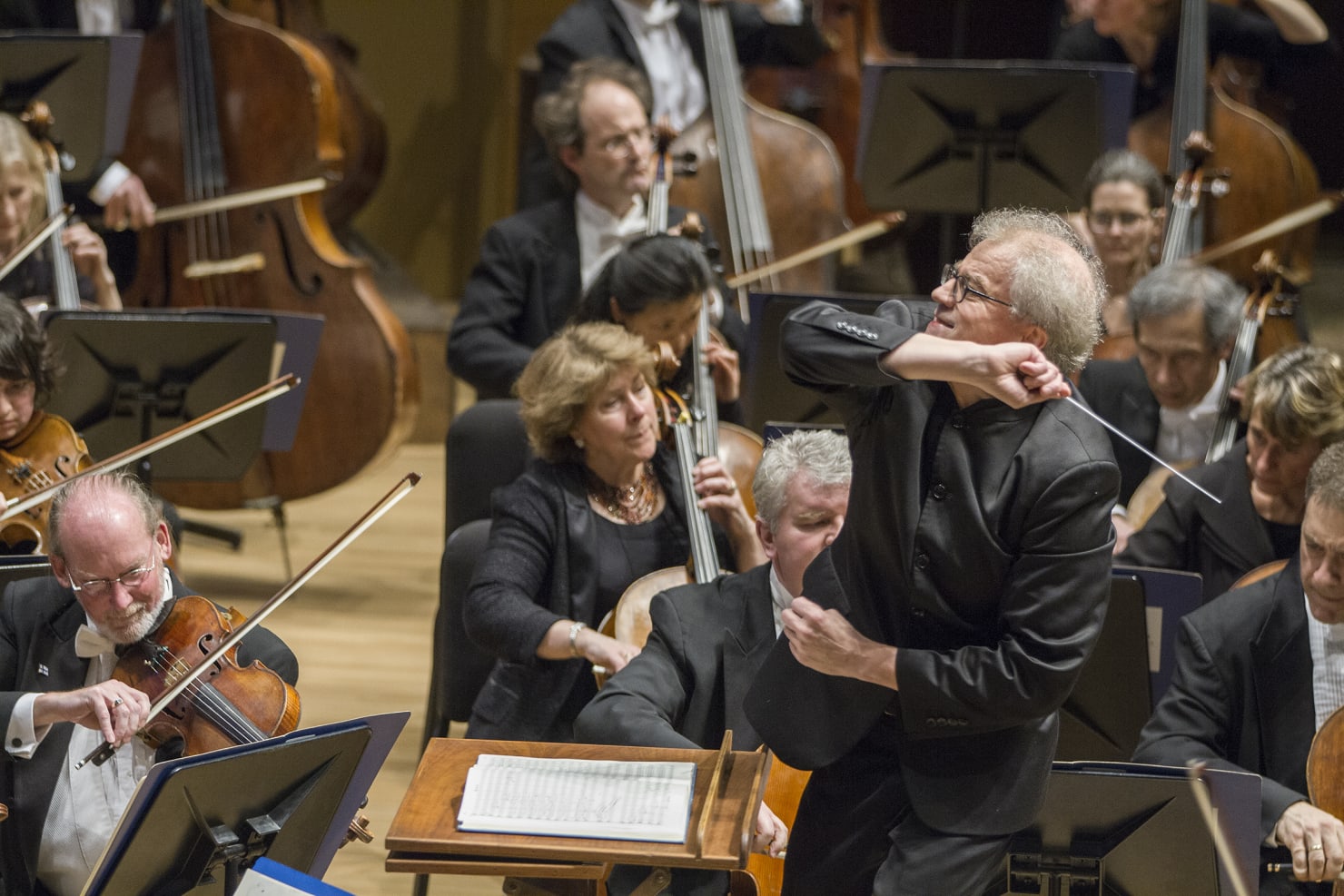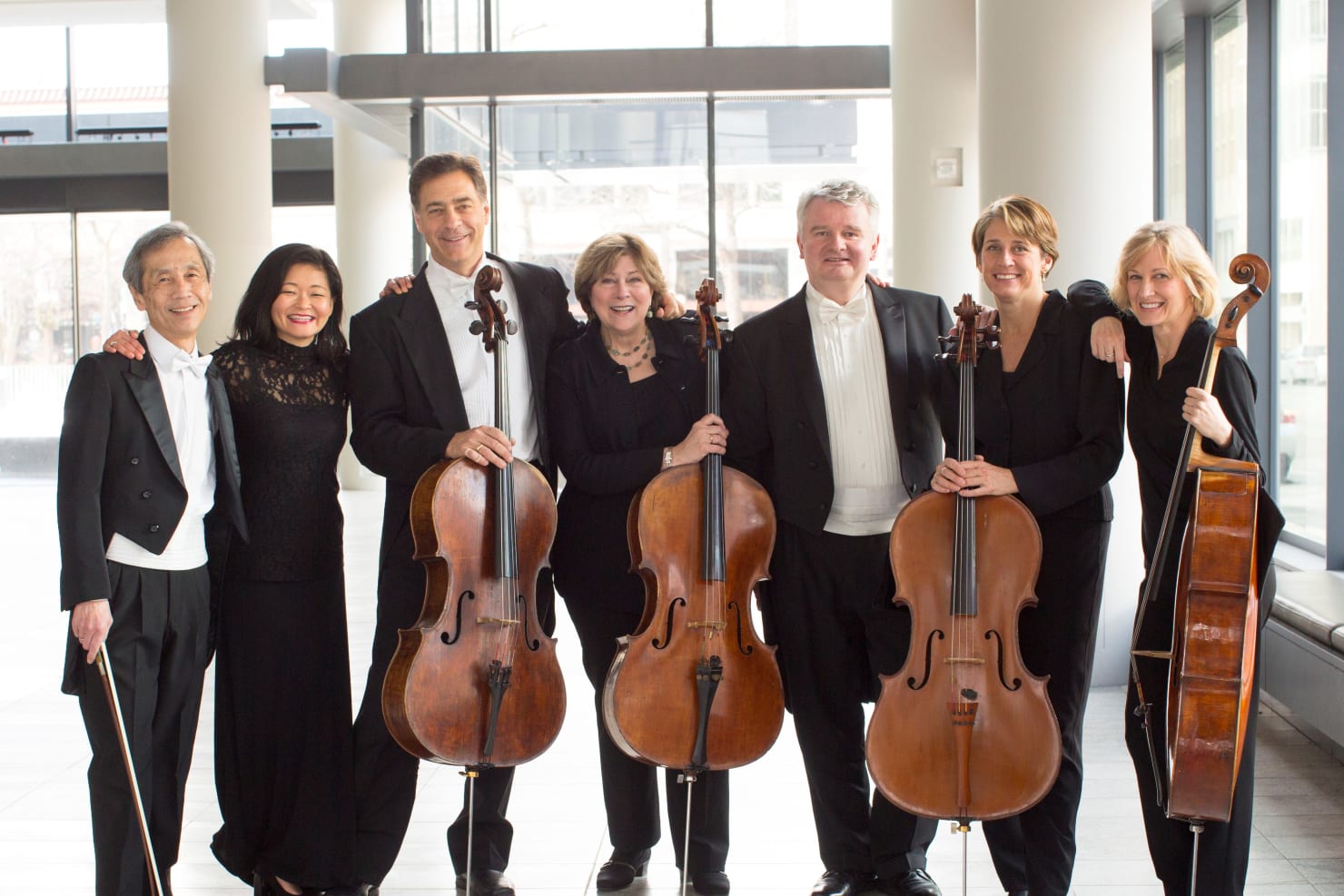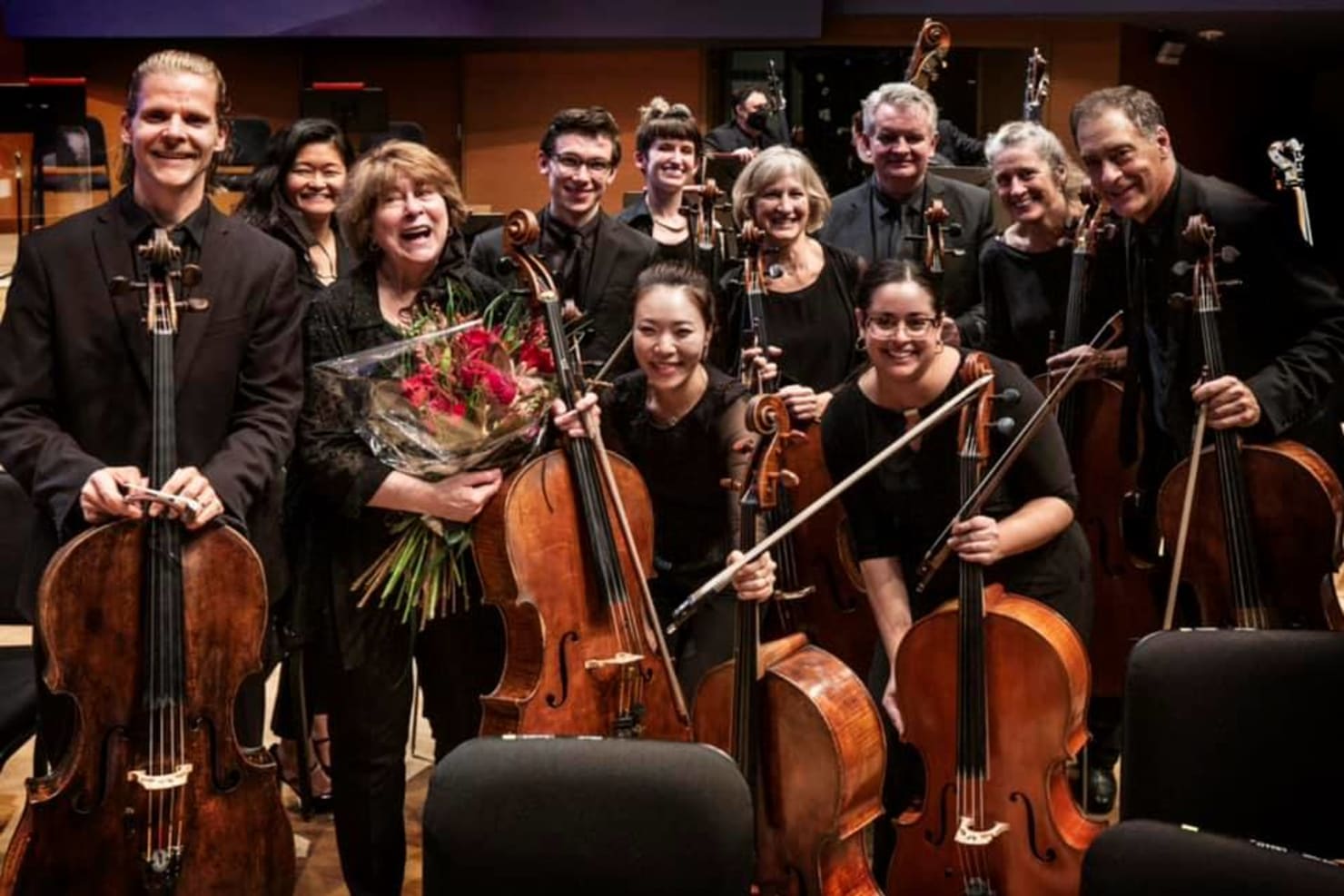The Best Seat in the House

By Marcia Peck
When I joined the Minnesota Orchestra’s cello section a half century ago—now there’s a sentence I never dreamed I’d have occasion to write!—I was new to the state and new to the life of a full-time symphony musician.
My path to Minnesota had been a long one. As a schoolgirl in New Jersey, attending my weekly cello lessons, practicing the requisite hour a day, I didn’t know I wanted to play in an orchestra “when I grew up.” It didn’t seem a likely ambition. For one thing, the day my father drove me 14 miles to Carnegie Hall to hear the New York Philharmonic rehearse, I couldn’t help but notice that every last musician was a man. My somewhat fuzzy ambition became simply to be “the best cellist I could be.”
Then, in my sophomore year of high school I won a life-changing scholarship. The flow of string players to the U.S. following World War II had dried up, creating what the national musicians’ union, the American Federations of Musicians, identified as a pending “string famine.” In response, the union created and funded the International Congress of Strings, an eight-week summer program—held that year at Michigan State University—which between 1959 and 1970 prepared 1,200 young string players, ages 15 to 23, to elevate the quality of orchestras across the U.S.
At 15, I was the worst cellist there. But that summer awakened my sense of possibility. The faculty were principal players from top orchestras; competition was keen; practice paid off. The following year I won fourth chair in the New Jersey All-State Orchestra and played my first performance of Tchaikovsky’s Sixth. I was on my way.
A number of years and many, many, many hours of practice later, I won my spot in the Minnesota Orchestra’s cello section. I met my husband, the handsome fourth horn player. Our daughter became the first baby permitted to accompany the Orchestra on tour, paving the way for other musicians to be able to combine family with a demanding orchestral career.
Meanwhile, I came to view my chair, fourth in the cello section, as the best seat in the house: close to center stage where I could hear—and “play into”—the entire, balanced, orchestral sound, and close enough to the first stand to strive to emulate (formidable task!) our superstar principal cellist, Tony Ross, while inspired by the wonderful cushion of sound from the cellos behind me.
I remember recording the complete orchestral works of Ravel with Stanislaw Skrowaczewski. It was very early in my career here, and I was playing nearly all of the repertoire for the first time. I practiced the parts, tried to overcome the many technical challenges singular to Ravel—the nearly airborne shifts of tempo and color that astonish as they fly by. I was learning to trust my colleagues and they were guiding me, nudging me to adjust—here to blend in, there to be bold.
As I remember, it had been an exhausting recording week; everyone was tired. La Valse was the last work up. As the session began, there was the usual cacophony of an orchestra warming up; fragments of solo passages; tuning of woodwind chords, a blur of string passages. The Orchestra tuned. Silence. Skrowaczewski gave the smallest of cues for the basses to begin that barely audible rumble of a heartbeat that sets the waltz in motion. Twelve minutes later—after waiting the necessary seconds of silence—the team of stunned recording engineers burst into “Bravos.” The Orchestra had captured all the decadence and ambiguity and glory of Vienna at the end of the 19th century in a single, sweeping take. And that take still stands as one of the Orchestra’s signature accomplishments. To this day, the Complete Works of Ravel with Skrowaczewski and the Minnesota Orchestra is cited as one of the most admired Ravel collections of all time.
Somehow, that shocking number of 50 years went by in a flash. And yet those decades are marked by countless moments of grace, beauty and breathtaking musicmaking—by my colleagues (including this superbly prepared new generation of musicians who populate our Orchestra), our maestros, and the guest artists who not only dazzle with their artistry, but also with their collegiality. Performing chamber music in the early years of Sommerfest with such luminaries as Jackie Parker, Gil Shaham, Garrick Ohlsson, Stephen Hough, John Browning, Yo-Yo Ma, Joshua Bell and Pam Frank have stood out as cherished moments of my musical life.
I do know how lucky I am. I’ve been on stage at Carnegie Hall not once but myriad times with our Orchestra, in which women now make up more than half of the string section. Not everyone is fortunate enough to find a profession that would be so difficult to relinquish 50 years later. At first I suspected that leaving my special spot, fourth-chair cello, would leave me feeling bereft. There are so many orchestral scores I’ll always want to play one more time; a glance at March and April alone includes Rachmaninoff, Rosenkavalier, La Valse, Daphnis!
But the truth is that I can still discover the new works our Orchestra is exploring every week. I can still go deeper into the beloved “oldies” that our musicians make new with every performance. I can still experience all the wonder and brilliance and miracles that our Orchestra creates—and I can do it in the audience. With the audience I envied all those years. With you.
Marcia Peck retired from the Minnesota Orchestra last October, capping a 50-year tenure that is the longest in the ensemble’s history. She is also an award-winning fiction writer who has received two Minnesota State Arts Board Artists Fellowships, among numerous other honors, and she is currently working on a memoir, UNACCOMPANIED.
Related Articles

Meet the Musicians
Minnesota Orchestra Musicians Around Town
When Minnesota Orchestra musicians aren’t at Orchestra Hall, you can find many of them around the Twin Cities and beyond in other types of musical performances.

Meet the Musicians
A Q&A with Music Innovator Wordsmith

Meet the Musicians
Meet a Musician: Eric Sjostrom

Meet the Musicians
Musicians Shout Out Their Teachers

Meet the Musicians
